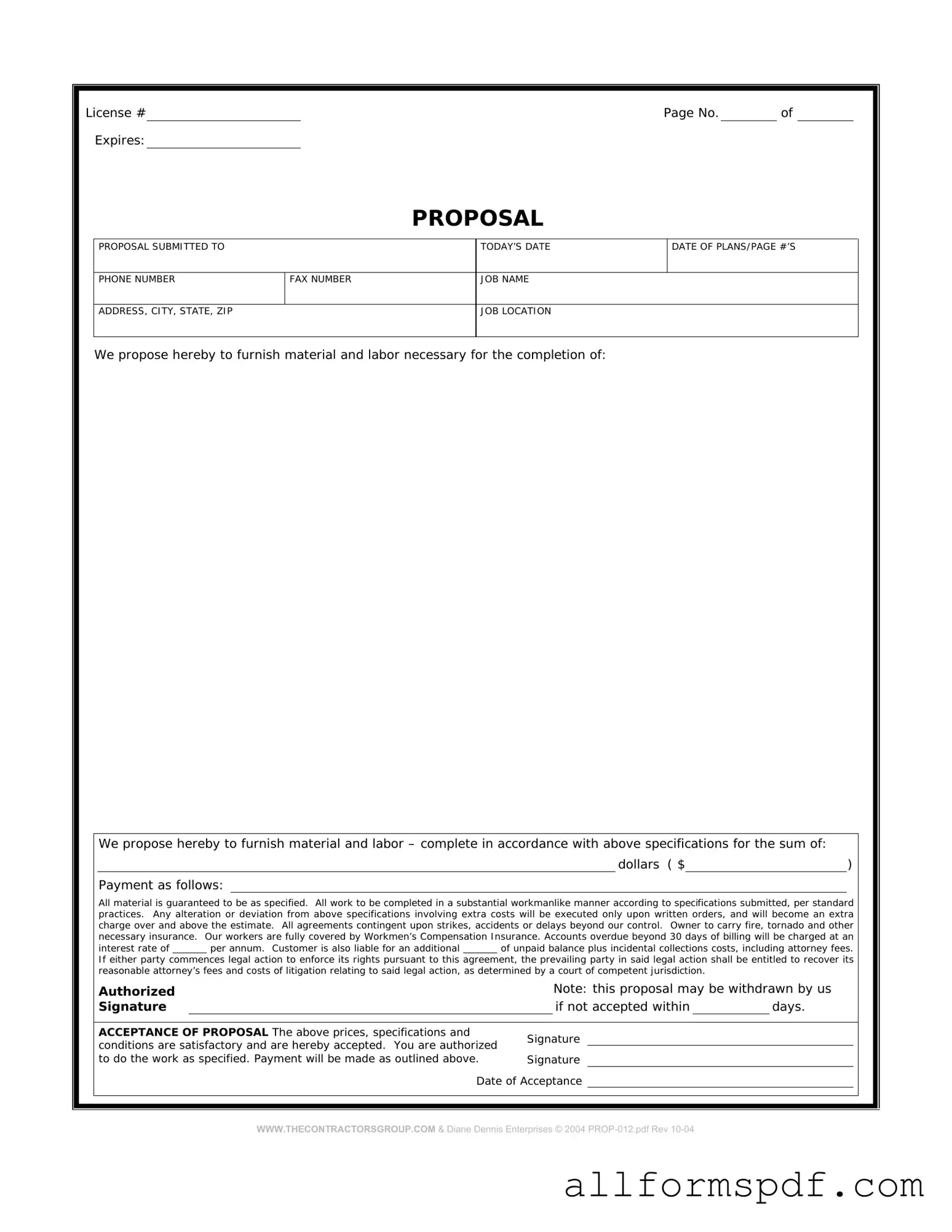Filling out a construction proposal form is an essential step in the bidding process for construction projects. However, many individuals and companies make common mistakes that can lead to misunderstandings or even loss of the contract. One frequent error is failing to read the instructions carefully. Each proposal form often comes with specific guidelines that detail how to complete it. Ignoring these instructions can result in incomplete submissions.
Another mistake is not providing accurate measurements or quantities. When estimating materials or labor, precision is crucial. Rounding numbers too liberally or making assumptions can lead to significant discrepancies in the final proposal. This can not only affect the cost but also the feasibility of the project itself.
People sometimes overlook the importance of including all necessary documentation. A proposal might require supporting documents such as licenses, insurance certificates, or financial statements. Omitting these can lead to disqualification from the bidding process.
Additionally, some individuals fail to clarify the scope of work. A vague description can lead to different interpretations by the client and contractor. Clearly outlining what is included in the proposal helps ensure that all parties have the same expectations.
Another common issue is not accounting for contingencies. Construction projects can be unpredictable, and costs may change due to unforeseen circumstances. Proposals should include a buffer for these potential changes, which can help avoid disputes later on.
People may also neglect to double-check for errors in calculations. Simple arithmetic mistakes can drastically alter the total cost of a proposal. Taking the time to verify all figures can prevent costly oversights.
Furthermore, some individuals forget to consider the timeline for the project. A well-thought-out schedule is just as important as the financial aspects. Proposals should include realistic timelines that reflect the complexity of the work involved.
Communication is key in the construction industry. Failing to include contact information or not being responsive to follow-up questions can hinder the proposal's success. Clear lines of communication help build trust with potential clients.
Lastly, people sometimes submit their proposals late. Timeliness is crucial in the competitive construction industry. Missing a deadline can result in automatic disqualification, regardless of the quality of the proposal submitted.
